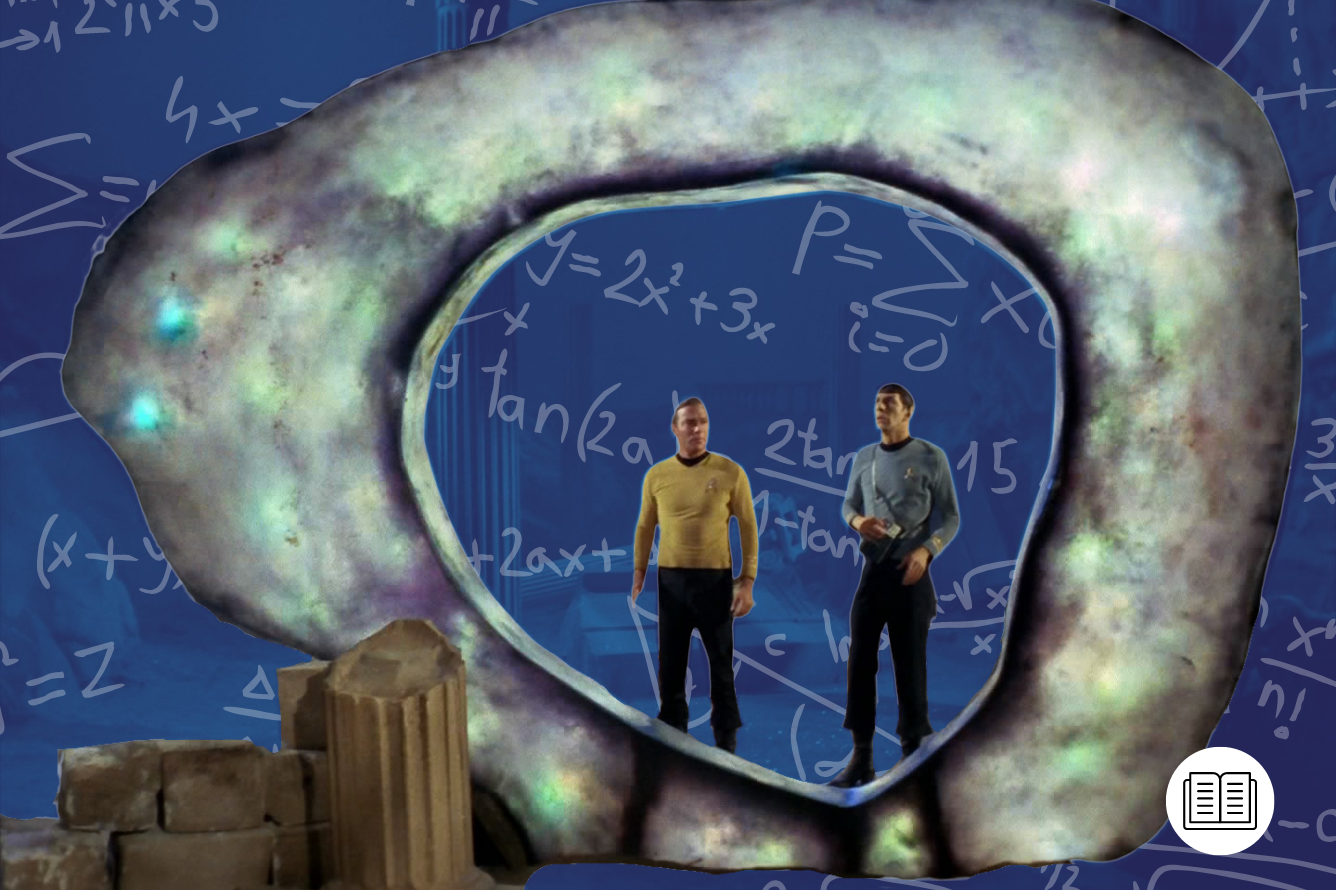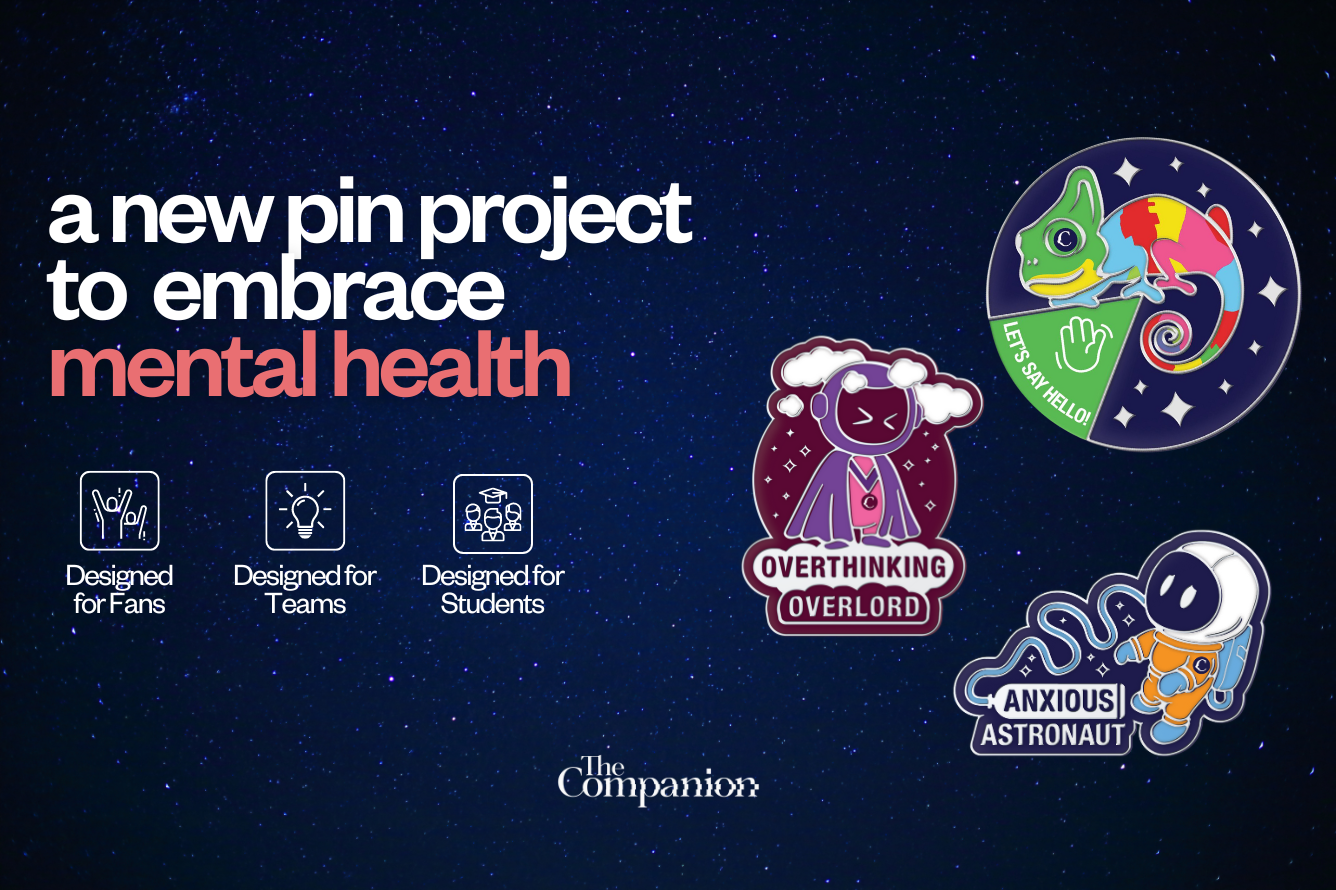Data (Brent Spiner) was created around the year 2336 by cyberneticist Doctor Noonian Soong (also Brent Spiner) on the planet Omicron Theta – 300 years from the present day on the distant edges of Federation space. How, then, did his head come to be discovered in a cave on Earth that had been sealed shut since the late 1800s, more than 500 years before?
This is how the Star Trek: The Next Generation episode ‘Time’s Arrow’ (S5, Ep26) begins, causing both the crew of the Enterprise and the audience at home to immediately think the same thought: WTF is going on?
But Data is characteristically chill. “At some future date, I will be transported back to 19th century Earth, where I will die,” he says. “It has occurred. It will occur.” Although Data didn’t actually die, he did leave his head in the past, the same one found five centuries later.
‘Time’s Arrow’ is one of my favorite examples of Trek’s many excursions into the brain-aching brilliance of time travel storytelling. It poses a centuries-spanning sci-fi riddle that forces us to conduct our own thought experiments and to ask ourselves: if we change the past, do we change the future?

The Grandfather Paradox in Star Trek
Last time I checked, no one has built a temporal transmitter or found a time crystal, but that doesn’t mean we can’t consider what the consequences may be if we could travel back in time. And when we do this, we very quickly run into travel paradoxes – contradictions that make the concept of time travel seemingly impossible. Captain Janeway (Kate Mulgrew) shares her point of view on these unequivocally in the Star Trek: Voyager episode ‘Future’s End’ (S3, Ep8-9):
“Time travel. Since my first day on the job as a Starfleet captain I swore I’d never let myself get caught in one of these godforsaken paradoxes. The future is the past, the past is the future, it all gives me a headache.”
Theoretical physicists and philosophers have been grappling with the implications of time travel paradoxes for years and thanks to the writers on Trek, we’ve been able to explore many of them with our favorite starship and station crews.
The most well-known, and most relevant to Trek, is ‘The Grandfather Paradox’. Put simply, this paradox posits that if you could travel back in time and kill your grandfather before either of your parents were born, you erase your own existence from the universe (no grandfather, no parents, no you). But in a universe where you now never existed, you wouldn’t have been able to travel back in time and kill your own grandfather. So… he doesn’t die and you are stillborn. And around we go.
Many people point to paradoxes like this as evidence that time travel could never be possible, but not everyone agrees. In his 1976 essay ‘The Paradoxes of Time Travel’, philosopher David Lewis asserts: “The paradoxes of time travel are oddities, not impossibilities.” Instead, some people believe paradoxes might show you can’t easily change the past, not that you can’t travel to it. If you don’t buy his opinion, maybe you’d like a Vulcan’s take instead. Tuvok (Tim Russ) tells Janeway in the Star Trek: Voyager episode ‘Relativity’ (S5, Ep23): “Like most time paradoxes, it’s implausible but not necessarily illogical.”

I don’t think it’s worth getting bogged down in the question of whether time travel could be possible or not. Unless you have a Ph.D. in chroniton particles or you’ve obtained schematics for a Krenim ship, you don’t need to be overly concerned with the often contradictory (and sometimes farcical) approach to time travel on Trek.
Instead, let’s revisit some of the greatest time travel stories in Trek and consider the paradoxes and repercussions they present and what these stories could mean for us today. And before you start griping about the many time travel episodes not covered here, I genuinely wish we could cover them all, but …I just don’t have time.
The Predestination Paradox in Star Trek
In ‘Time’s Arrow’, the discovery of Data’s head in the present triggers the events that cause him to travel back into the past and leave it there. This is a time loop – there’s no clear beginning or end.
‘The Predestination Paradox’ is a time loop, but it’s more specific. In the Star Trek: Voyager episode ‘Relativity’, Seven of Nine (Jeri Ryan) refers to it as ‘The Pogo Paradox’: “a causality loop in which interference to prevent an event actually triggers the same event.”
For example, Seven refers to events we’ve seen in the movie Star Trek: First Contact (1996) when the Borg traveled back in time to prevent Zefram Cochrane (James Cromwell) from breaking the warp barrier. They succeeded but, in doing so, USS Enterprise intervened and ended up helping Cochrane in the very flight the Borg wanted to prevent. “So, in a way, the Federation owes its existence to the Borg,” USS Relativity’s XO, Lt. Ducane (Jay Karnes) says.
Another of the most-loved episodes about time is Star Trek: The Next Generation’s ‘Tapestry’ (S6, Ep15). Picard’s artificial heart makes injuries he sustains in the present fatal. But, on the verge of death, Q (John de Lancie) offers him a chance to go back and avoid a bar fight in his 20s in which he was stabbed by a Nausicaan. That way he’d never need an artificial heart in the first place. He goes back in time and avoids the fight but without that experience, he learns that he becomes a completely different person decades later – shy, less likely to take risks, and certainly not a leader.

Q sends him back again. This time, he’s stabbed, and, knowing what he knows now about the significance of this event, he laughs as the Nausicaan plunges a knife through his heart. This might not sound like a typical time loop but when we remember that Q showed Picard the original event in a flashback and he laughed, and in the Star Trek: The Next Generation episode ‘Samaritan Snare’ (S2, Ep17) Picard tells Wesley (Wil Wheaton) he laughed – something Picard chalks up to his ego at the time – it seems like the visit to the past Q enabled may have been the way that event played out all along.
Time loop episodes are among my favorites. Not only do they ignite the same mind-melting unease and wonder as other stories of cosmic horror, but they also allow us to speculate about the predetermined nature of time. Even without the time travel component, it might be comforting to consider that events were always destined to unfold how they have. Or maybe you think the complete opposite and that, even with temporal tech, there might be no escaping predetermined events in the past and the present.
The Butterfly Effect in Star Trek
I like to think of time loops as time travel that reinforces history, but what about journeys through time that drastically alter it?
This is presented well – if heavy-handedly – in Star Trek: Voyager’s ‘Year of Hell’ (S4, Ep8-9). These episodes introduce the Krenim, a race with temporal tech that allows them to ‘erase’ starships, people, and even planets from the timeline. Imagine clicking on something and deleting it, but on a colossal scale.
A Krenim officer called Annorax (has there ever been a more on-the-nose name for a nerd character?) makes countless alterations to the past to return the Krenim Imperium to its former glory but also, more importantly, to create a present in which his wife is still alive. Despite his meticulous temporal calculations, the many alterations he makes often result in catastrophe.
We see this kind of tampering often in Trek, like in Star Trek: Voyager’s ‘Relativity’ when Seven is recruited by Captain Braxton (Bruce McGill) to find a temporal disruptor on Voyager planted in the past that ends up destroying the ship in the future. This episode features a lot of jumping back and forth through time, temporal sickness, mistakes that alter time too much, a breach of the Temporal Prime Directive, and so on. It feels like a mess at times, but that’s kind of the whole point. Ducane, the XO, says: “Needless to say we need to clean up the timeline.”

The award-winning Star Trek: The Original Series episode ‘The City on the Edge of Forever’ (S1, Ep28) presents a more grounded and emotional example of the monumental repercussions a single choice can make. McCoy (DeForest Kelley), in a delirious state, jumps through a time portal called The Guardian of Forever that displays the history of Earth, allowing anyone to leap back into the past. As soon as he does, the away team sent to retrieve him can no longer contact Enterprise because McCoy has changed the past so significantly. “Earth’s not there. At least not the Earth we know. We’re totally alone.” Kirk says, ominously.
The Guardian of Forever allows Kirk (William Shatner) and Spock (Leonard Nimoy) to travel back to before McCoy arrives in order to stop him from interfering with the past. They find out he saved the life of a woman called Edith Keeler who went on to become a pacifist. Her activism meant the US didn’t get involved in WWII, so Germany developed the atomic bomb first, Hitler rose to power and, centuries later, this ripple effect meant Enterprise never existed – or at least not in the way it did before McCoy’s actions.

Kirk and Spock realize that to save their future, they need to let Keeler die – a decision made all the more heartbreaking because Kirk fell in love with her. Kirk holds back McCoy from saving her in an accident and, through floods of tears, everything returns to normal. “Time has resumed its shape. All is as it was before,” the Guardian says.
These episodes allow us to engage with the concept of ‘The Butterfly Effect’ – the theory that even the smallest event can create monumental consequences – and consider that the (mostly) peaceful future we see imagined in Trek required sacrifice and a specific chain of events that could have come tumbling down like a Jenga tower at any moment.
In doing so, we can apply that same thinking to our own lives and consider how the journey we’ve each taken to this present moment hasn’t been a straight line from past to present, but a series of decisions to choose one path over another. Or, as Jorge Luis Borges writes in his short story of the same name, we could visualize our lives up until this present moment as “a garden of forking paths”.
Parallell Universes in Star Trek
There’s a theory that traveling back to the past and changing things doesn’t overwrite the timeline, like the examples above, but instead creates an alternate universe, effectively, where everything unfolds differently.
There’s contention about whether multiple or parallel universes and multiple or parallel timelines are the same things. But we see these terms used interchangeably a lot in science fiction, so let’s do the same.
The best way to visualize the concept of multiple universes with Trek is Star Trek: The Next Generation’s ‘Parallels’ (S7, Ep11), when the crew of Enterprise sees multiple alternate versions of Enterprise, all having been through different events.
The existence of a mirror universe, where everyone is basically super terrible versions of themselves, is also common throughout Trek. It was first explored in the Star Trek: The Original Series episode ‘Mirror Mirror’ (S2, Ep4) when a transporter problem sends Kirk, McCoy, Scotty (James Doohan), and Uhura (Nichelle Nichols) there where they meet their evil counterparts. But it’s also a part of other series, like Star Trek: Deep Space Nine and Star Trek: Discovery.

There’s also an example of a new timeline being created in response to a temporal event in the 2009 film Star Trek. Nero (Eric Bana), a Romulan from 2387, travels back in time through a black hole to 2233. When he arrives, he destroys the USS Kelvin and kills a lot of people, including William Kirk, James T Kirk (Chris Pine)’s father.
Nero’s actions create a new timeline that exists separately and, crucially, doesn’t overwrite the original one. This was confirmed by Star Trek co-writer Bob Orci in an interview with Trek Movie. There’s the original ‘prime’ timeline and the new alternate timeline or the ‘Kelvin’ timeline.
Changing Our World with Fiction
On its surface, Star Trek is a fun science fiction show. We can enjoy space battles, cool tech, and interstellar politics. But these stories invite us to explore concepts that inspire further scientific inquiry, spark our creativity and teach us more about ourselves.
Time travel stories tap into our desire to make sense of our own place in time by encouraging us to look at our own past and identify the decisions that changed the trajectory of our life. They present notions such as a ‘predetermined future’ and force us to ask if we will choose to pursue our dreams.
Using stories from Trek as our testbed for thought experiments like these gives us opportunities to reflect on yesterday, ask questions about today, and make choices about tomorrow.
Whenever I get swept up in the implications of time travel and the possibility of being able to go back and correct past mistakes, I’m reminded of ‘Tapestry’ and Picard (Patrick Stewart)’s heart-to-heart with Riker (Jonathan Frakes) at the end of the episode:
“There are many parts of my youth I’m not proud of. Loose threads, untidy parts of me I’d like to remove. But when I pulled on one of those threads it unravelled the tapestry of my life.”
This article was first published on December 15th, 2021 on the first Companion website.
The cost of your membership has allowed us to mentor new writers and allowed us to reflect the diversity of voices within fandom. None of this is possible without you. Thank you. 🙂









